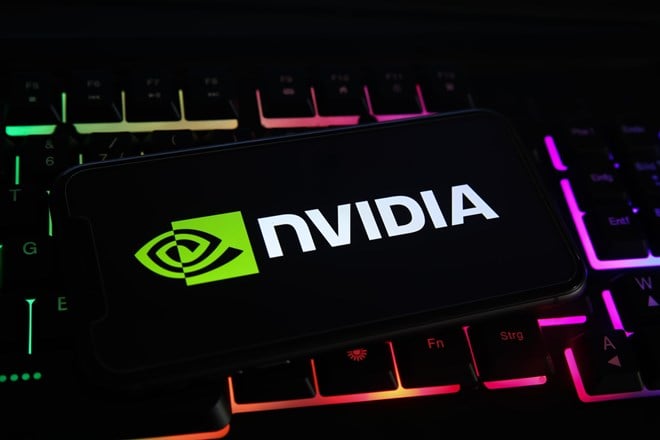
Shares of Nvidia Corporation (NASDAQ: NVDA) slipped a little, this week, during an all-around poor stock market session. Both the S&P 500 Index and the Dow Jones Industrial Average too a slight hit, falling 0.13 and 0.15 percent, respectively. The stumble caps a two-day upward streak, closing just short of a 52-week high, which last posted on November 22, of last year.
While the overall market was mostly down, Nvidia still underperformed when compared to some of its competitors. For example, shares of the software giant Microsoft Corporation dipped, but only by 0.24 percent; and Intel Corporation slipped nearly one percent, as did Texas Instruments, inc.
A Strong Start, But Not For Long
The stock for NVIDIA Corp started off the year on a high note. As a matter of fact, the share price has mostly matched the consensus price target for more than a year leading into 2022. Then, in January, the stock reached its peak value and has been on a decline ever since. Actually, its early January price of $301 per share is the highest the stock has seen this year so far.
Fortunately, it has been wavering up and down and has recovered, slightly, from its lowest price of the year, so far, which is $156.
That said, the current volume of 46.32M is about 20 percent lower than the 65-day average of 57.5M.
Good News on the Horizon
The good news, however, is that things could turn around very soon. For one, Nvidia is expected to post an EPS of $1.27 for the current quarter. Should this happen it would be an improvement of more than 22 percent from the same period last year.
Furthermore, the consensus estimate for earnings on the current fiscal year is $5.47. This represents an increase of more than 23 percent, year over year. Finally, the consensus earnings estimate for the coming fiscal year is expected to be $6.30. This represents an increase of more than 15 percent from what they had expected one year ago.
Specifically, analysts report Nvidia has a consensus sales estimate of $8.12 billion for the current quarter. This is also a bump from the same period last year, by nearly 25 percent. For this year, these estimates grow to $33.94 billion; and for next year, the estimates will register at $38.47 billion.
Analysts Give NVIDIA A BUY Rating
More than three dozen analysts offering 12-month price stock forecasts have given NVIDIA Corp a median target of $250, with a high and low estimate of $433.82 and $130, respectively. This estimated median represents an increase of 56.54 percent, up from the previous price of $159.70.
The vast majority of these analysts agree that NVIDIA deserves a rating of BUY. It appears this has been the consensus for at least the last three months. The small percentage of analysts who give it a HOLD rating is also unchanged, as are the number who believe the stock is overweight.
NVIDIA: A History
Founded in 1993 by Curtis, Priem Jensen Huang, and Chris Malachosky, NVIDIA is perhaps best known for their graphics chips that make it possible to enjoy this generation of PC gaming and other multimedia. As a matter of fact, when NVIDIA came onto the scene, there were only one of at least two dozen independent graphics chips makers in the industry; today they are the only one still in operation.
Their first product, the NV1, launched in 1995. Sold as the Diamond Edge 3D 2D/3D graphics core, this PCI card was based on quadratic texture mapping. More importantly, the biggest arcade game company in the world, Sega, chose the NV1 as the chip that would help them port the popular Virtua Fighter arcade game to their Genesis home console: the first 3D game to run on a NVIDIA graphics card.
This catapulted NVIDIA further into the industry, which eventually led them to develop the first GPU (Graphics Processing Unit), in 1999. The GeForce 256 revolutionized computer graphics and quickly became the industry standard, specifically in that it could manage the processing of 10 million polygons per second, minimum. More than two decades later, typical GPUs can now process 7 billion polygons per second.
At this time, NVIDIA announced their initial public offering, at $12 per share.
Of course, these processors are now so powerful they are used in a variety of industries for a multitude of purposes. Obviously our next-generation home consoles and gaming PCs require this type of processing power but you can also find chips like these in everything from automobiles to machines that help design things like tennis shoes.
Companies in This Article: